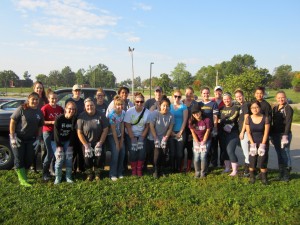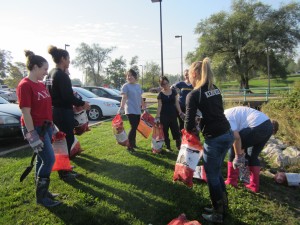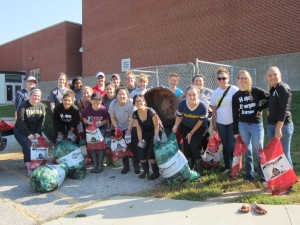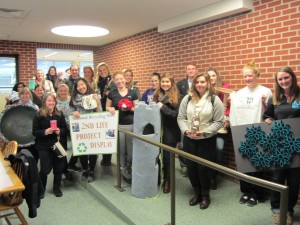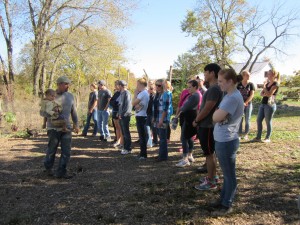On Thursday, December 4, 2014, students from Dr. Janice Clark’s HLTH 440 Program Implementation and Evaluation course presented a summary of their capstone projects in VH 1010. Fall semester students selected or were assigned a campus/community service learning project. They could work individually, in pairs or small groups. Each student was required to complete a minimum of 30 hours on the project.

Collectively, these 21 Health Science students contributed over 763 hours in health education service to the campus and community!!
The students and their projects are:
-Kimberly Emery & Elizabeth Groenweghe, Food Bank Marketing & Buddy Packs (Food Bank of Central and Northeast Missouri. Susan Dublin, Regional Coordinator, was the project supervisor.) -Kaitlyn McManus, HLTH 260 Teaching Assistant (Dr. Alicia Wodika was the project supervisor.) -Erin Lynch & Meredith Putney, Sleep Awareness Week at Truman State University (Dr. Janice Clark was the project supervisor.) -Bailey Peterson & Ryan Ward, HLTH 195 Health Lessons (Liz Jorn, Jana Arabas, and Cassie DeBlauw were the project supervisors.) -Liz Chau and Shantel Stewart, Kirksville Sodium Reduction Project (Dr. Janet Head, Co-Director, ATSU-KCOM AHEC and Amanda Mills ATSU-KCOM AHEC were the project supervisors.) -Melissa Devine & Adam Hunn, HLTH 290, Section 1 & 2 Teaching Assistants (Dr. Janice Clark was the project supervisor.) -Kara Busken & Madeline Maher, NEMO Heart Health Heart & Sole Walk (NEMO Heart Health Corporation. Ms. Lisa Archer, RN, Director of Simulation & Performance Assessment, ATSU, was the project supervisor.) -Katie Beaton & Angelyn Rosenberger, NEMO Heart Health Gents & Joules Planning (NEMO Heart Health Corporation. Ms. Lisa Archer, RN, Director of Simulation & Performance Assessment, ATSU, was the project supervisor.) -Louis Stueber-Roche & Austin Olendorff, Faith Lutheran School Health Lessons (Mrs. Pamela Richmond, Faith Lutheran School was the project supervisor.) -Kaitlyn Lotz & Jason Baker, Oral Health Alliance Dental Health Project, (Ms. Emilie Maierhofer, Health Education Coordinator, NEMO AHEC, was the project supervisor.) -Neireida Morris & Shadria Swanson, Dental Health Puppet Shows (Ms. Amy Carroll, Health Educator/Outreach Coordinator, Northeast Missouri Health Council, was the project supervisor.


